THE HINDU – CURRENT NOTE 05 February
 Heavy turnout in Punjab and Goa
Heavy turnout in Punjab and Goa
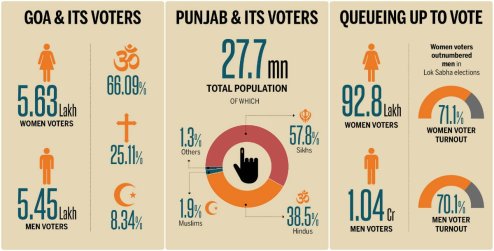
- The Assembly polls in Punjab saw a voter turnout of 78.62% on Saturday. Mansa district witnessing the highest polling at 87.34%, while the least polling was seen at 71.9% in SAS Nagar (Mohali). The State recorded 78.57% polling in 2012.
- The issue of fake votes being cast led to scuffles in several booths. While polling across the State was by and large peaceful, a few clashes and incidents of firing were reported. Technical glitches with the Electronic Voting Machine (EVMs) held up voting at a few booths.
- 83% turnout in Goa. polling was rescheduled at one booth in Margao town of south Goa. EVM failure was also reported at a booth in Cortalim in South Goa.
- Each constituency had a special pink polling station, managed entirely by women, where first time women voters were presented a pink teddy bear, first time male voters a pen and other voters a rose added to the charm of election day.
 AIDS body rubbishes govt. hospital’s claim on HIV cure
AIDS body rubbishes govt. hospital’s claim on HIV cure

- A government-run homeopathy hospital in Hyderabad has been treating over 10,664 HIV (PLHIV) positive patients with a homeopathy pill as an experimental treatment. Investigators of the experimental treatment call it a clinical trial, it has not been registered with the Clinical Trial Registry of India (CTRI).
- The National AIDS Control Organisation (NACO) will be initiating legal and administrative action against the doctors for misleading HIV patients by claiming to have cured eight persons, who according to the doctors have a HIV negative status after being treated with homeopathy pills.
- The drug being administered is made out of the venom of the timber rattlesnake (Crotalus horridus) that is endemic to eastern United States. “The drug has been in use in homeopathy for the last 200 years. It works by inhibiting the enzyme reverse transcriptase — which helps convert RNA into DNA — thus preventing multiplication of the virus.
- 73% of these patients who think they are being ‘cured’ by homoeopathy are taking ART (Antiretroviral Therapy), which keeps the viral load down.
Fake Drug:
- The Telangana State AIDS Control Society (TSACS) has not yet been taken into confidence about the discovery of drug.
- NACO is initiating legal and administrative action against doctors involved in such ‘trials’. A Police complaint against the institution and doctors involved has been initiated.
 In Nagaland, govt. wings pay ‘extortion money’
In Nagaland, govt. wings pay ‘extortion money’
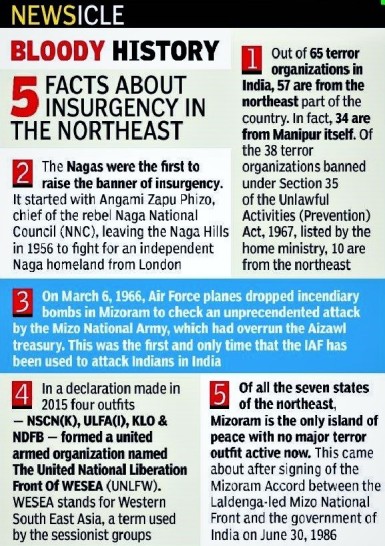
- A probe by the National Investigation Agency (NIA) has revealed that at least 12 government departments in Nagaland regularly paid “extortion money” to members of the National Socialist Council of Nagaland- Khaplang (NSCN-K), a banned terrorist organisation that was allegedly behind the 2015 ambush in Manipur in which 18 soldiers were killed.
- The NIA’s investigation has found that the government departments paid extortion money to two other outfits: the NSCN-Isak- Muivah (NSCN-IM) and the Naga National Council (NNC).
- The Government of India has signed a framework agreement in 2015 with the NSCN-IM to find a solution to the decades-old Naga issue.
- The records in our possession are 2012 onwards, but the racket has been going on for decades.
 I was forced into a deal with India, Jayewardene told U.S. envoy
I was forced into a deal with India, Jayewardene told U.S. envoy
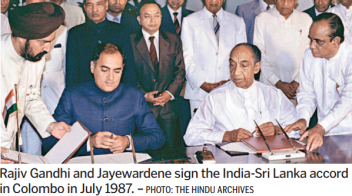
- President J.R. Jayewardene has been quoted as saying in a declassified document that Sri Lanka was forced into making a deal with India.
- When Sri Lankan armed forces had twice refused to take Jaffna. Jayewardene had twice ordered his troops to take Jaffna — “burn the place to the ground” — and they had talked him out of it on grounds of unacceptably high casualties.
- Indian Peace Keeping Force (IPKF) was deployed in the island nation about 30 years ago. A little over 1,200 Indian soldiers died in IPKF operations against the Liberation Tigers of Tamil Eelam in northern and eastern Sri Lanka between 1987 and 1990.
- In May 1991, former Prime Minister Rajiv Gandhi, who had signed the July 1987 peace deal with Jayewardene, was assassinated by the LTTE.
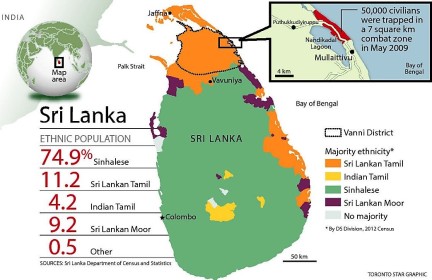
- India agreed to provide military assistance — the IPKF — to ensure peace according to the 1987 Gandhi-Jayewardene accord. In response to significant promises of devolution of powers to the Tamil minority and recognition of Tamil as an official language.
- Elections in the Tamil-populated northern and eastern provinces in Sri Lanka were finally held in November 1988.
- In the CIA’s assessment, India would intervene in Sri Lanka in two scenarios — one, if the government collapsed and, the other, if Tamil insurgents established a separate State.
- Indian intervention would most likely come [exactly what happened in 1987], as in 1971 [to deal with Marxist insurgents] following a request from Colombo to help in restoring internal order.
 Govt in talks with BIS to upgrade helmet standards
Govt in talks with BIS to upgrade helmet standards

- The Ministry of Road Transport and Highways (MoRTH) is in talks with the Bureau of Indian Standards (BIS) for upgrading the quality standards of helmets. The government is looking at a distinctive BIS mark for helmets to be sold in the market.
- A distinctly marked helmet for two-wheelers will help reduce risk of accident deaths in a big way. In 2014, about 34% of all road accident deaths were of riders/passengers on two-wheelers, while bicyclists accounted for 3% and pedestrians 9%.
- Apart from the helmet, the government has also made provisions in the New Amended Motor Vehicle Act (MVA) to increase validity of renewing of driving license for persons above 50 years for 10 years from present five years years, and for commercial drivers to five years from present three years. Similarly for fitness certificate so less people visit the transport offices.
 Switch off gadgets for healthy vision
Switch off gadgets for healthy vision

- Using smartphone/ tablet puts adverse strain on children eyes, leading to long-term problems with the vision. Constant exposure to these gadgets has a negative impact on the children’s eyesight and growth.
- It also takes away time from children to develop empathy and problem-solving skills and elements of social interaction that are typically learned during unstructured play and communication with peers.
Blue ray phenomena:
- The blue ray phenomenon is something that is new to even researchers, but what we do know is that our eye’s natural filters do not provide sufficient protection against blue light rays from the sun, let alone the blue light emanating from these devices or from fluorescent-light tubes. Prolonged exposure to blue light may cause retinal damage and contribute to age-related muscular degeneration.
- Blue light has a short wavelength and a high frequency, because of which it has a glaring effect on the eyes. Prolonged exposure to computers, television screens, smartphones and tablets strains the eyes and causes headache and fatigue.
The Study and Research:
- Studies show that a majority of children spend a large part of their time staring at digital screens. In some cases, it is as high as several hours at a stretch. A majority of children coming with complaints of poor eyesight have dry eyes and short sight, typically expected in such cases.
- International research says that small children’s dependence on tablets and smartphones hampers their ability to focus, concentrate and build a large vocabulary. Experts also add that gadgets cannot be given a blanket No. “Used wisely they aren’t all bad,” is the general refrain.
 Central Pollution Control Board assessing oil spill
Central Pollution Control Board assessing oil spill

- The Central Pollution Control Board (CPCB) is analysing samples from the oil spill resulting from a collision between two ships of the coast of Tamil Nadu.
- The Ministry of Defence is in charge of the oil spill management plan and is being coordinated by the Coast Guard.
- Assessment of any long term environmental damage is being done by the National Institute of Ocean Technology (Chennai) and theEnvironment Ministry.
- Preliminary assessments said several species of fish and turtle are believed to have been killed because of the spill.
- The Hyderabad-based Indian National Centre for Ocean Information Services has estimated that about 20 tonnes of oilmay have leaked when the vessels, M.T. BW Maple and M.T. Dawn Kanchipuram, collided on January 28 outside the Kamarajar Port.
- About 43 kms of the Tamil Nadu coastline may have been affected, the agency added.
- The M.T. Dawn Kanchipuram, was carrying 32,813 tonnes of oil as cargo, though in a statement, Kamarajar Port authorities said it was engine oil and not cargo oil, that had leaked.
- About 2,000 persons are involved in the clean up operations and 54 tonnes of sludge (mixture of oil, water, ocean material etc) was removed till February 2, according to the Press Information Bureau.
- “Over 90% of the work has been completed and most of the residual work is expected to be over in a couple of days,” it said.
 Panel formed to study Haj policy, subsidy issue
Panel formed to study Haj policy, subsidy issue
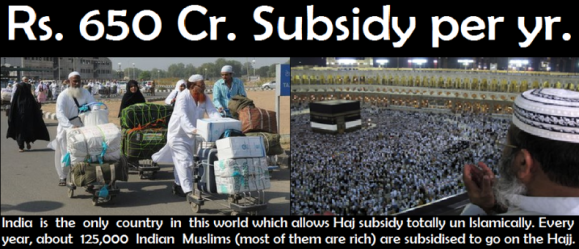
- The Union government has formed a six-member committee to study the ways to improve India’s Haj policy and look into the issue of subsidy to the pilgrimage in light of a 2012 Supreme Court order on gradually reducing and abolishing it by 2022.
- The committee will figure out whether the pilgrims can travel to Saudi Arabia paying less in the absence of the subsidy.
- The panel will give us a report in a month or two on how India’s Haj policy can be improved, how the pilgrims can get maximum concessions and how Haj can be managed better.
- The committee will also review the effectiveness of the management of pilgrims’ accommodation and air travel by the Haj Committee of India.
Committee Setup:
- Afzal Amanullah, former Consul-Consul General of India in Jeddah, has been appointed convener of the high-level panel.
- The former Bombay High Court judge S.S. Parkar, the former Haj Committee of India Chairman Qaiser Shamim, the former Air India Chairman and Managing Director Michael Mascarenhas and a Muslim scholar, Kamal Faruqui, are on the panel. Joint Secretary J. Alam is the member secretary.
 Emissions threaten Great Barrier Reef
Emissions threaten Great Barrier Reef

- A study by the Griffith University, Australia, conducted in collaboration with national and international experts in reef and chemical ecology, has shown that if the world continues with ‘business as usual’ CO2 emissions, important reef-building corals will suffer significantly by 2050 and die off by 2100.
- This is because algae will compete for space with corals in the reef, much like a weed, and eventually take over. Researchers knew increased CO2 had an effect on seaweed behaviour but have now been able to demonstrate just how this happens. They discovered that this is due to an increase in the potency of chemical compounds that poison corals.
 Lighter purse for arms deals
Lighter purse for arms deals

- The capital allocation for the purchase of new weapons and platforms for 2017-18 is lower than that in the present yearin recent Budget 2017-18. In the coming financial year, India is also likely to conclude some of the biggest “Make-in-India” deals in defence sector.
- A sum of ₹2,74,114 crore including ₹86,488 crore for defence capital has been allocated for defence expenditure excluding pensions. With the ₹78,586.68 crore capital allocation for this year, it represents a 10% increase.
Number Game with Miscellaneous component:
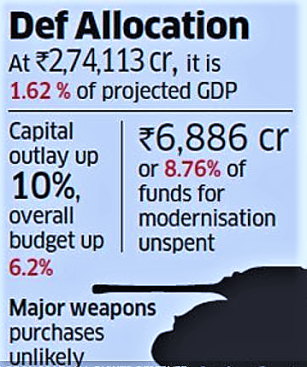
- The defence Budget has various components of revenue, capital, miscellaneous and pensions. Of these the allocation for the miscellaneous component has gone down from ₹36,133.18 to ₹14,852.22. The balance has been readjusted to revenue and capital heads.
- The provisions relating to revenue and capital expenditure of Defence Ordnance Factories, Research and Development, Director General Quality Audit (DGQA), Rashtriya Rifles and National Cadet Corps have been shifted from this demand to demands for grants of defence services in BE 2017-18.
- The combined allocation under the five heads in the capital expenditure is ₹8,488 crore. When deducted from the total capital allocation for the services, the revised figure is ₹78,000 crore which is in effect ₹586.68 crore less than last year’s.
- The capital budget includes payments for committed liabilities, which are payments for weapons already contracted, and remaining for procurement of new systems.
 Defiant Iran to carry out missile exercise
Defiant Iran to carry out missile exercise
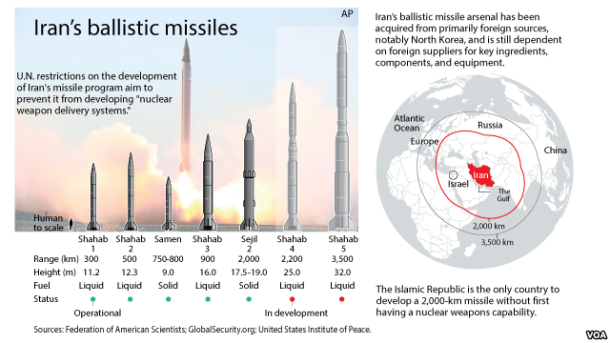
- Iran deployed missiles for a Revolutionary Guards exercise on 4 February 2017 in a show of defiance, a day after the United States imposed sanctions over a ballistic missile test launch a weekend ago.
- Relations between Washington and Tehran have deteriorated sharply since Donald Trump took office and promising a tough line on what he sees as Iranian belligerency towards U.S. interests and allies.
- The new sanctions are a response to Iran’s test launch of a medium-range ballistic missile on 29 January 2017 as well as its support for Yemeni rebels who attacked a Saudi frigate, officials said.
 Sri Lanka eyes China free trade deal
Sri Lanka eyes China free trade deal
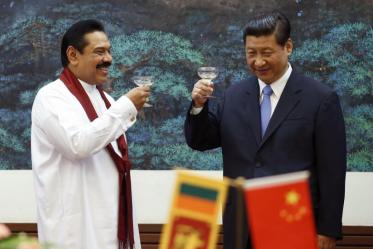
- Sri Lanka aims to finalise a free trade agreement with China this year and the country’s Prime Minister will visit Beijing in May,2017.
- China signed a deal with Sri Lanka late last year to further develop the strategic port of Hambantota and build a huge industrial zone nearby, a key part of Beijing’s ambitions to create a modern-day “Silk Road” across Asia.
- Hundreds of Sri Lankans clashed with police at the opening last month of a Chinese-invested industrial zone in the south,saying they would not be moved from their land. It was the first time opposition to Chinese investments in Sri Lanka had turned violent.
One Belt, One Road:
- China has spent almost $2 billion so far on Hambantota and anew airport and wants to spend much more, part of China’s “One Belt, One Road” initiative to build a new Silk Road with massive investments in infrastructure from Asia to Europe and beyond.
 Rail projects fund red flagged
Rail projects fund red flagged

- Announcements related to the Railways made by Finance Minister Arun Jaitley in Budget 2017-18 were based on Mr. Prabhu’s proposals, including the move to set up a rail safety fund named ‘Rashtriya Rail Sanraksha Kosh’ with a corpus of ₹1 lakh crore over a period of five years.
- Prabhu had suggested 30 points to be incorporated in Mr. Jaitley’s Union Budget speech during discussions with the Finance Ministry.
- The Union Budget announcement to redevelop 25 railway stations, set up solar power at 7,000 stations, provide lifts and escalators at 500 stations, provide end-to-end integrated transport solutions for various commodities, form a single window for coach-related complaints, increase the throughput by 10%.
- The listing of three railway PSUs on the stock markets — IRCTC, Indian Railway Finance Corporation and IRCON. Railway Minister had proposed a new holding company named Rail Holdco for its stakes in 13 public sector Railways-related enterprises.
- The Department of Investment and Public Asset Management in the Finance Ministry had, however, indicated its opposition to the idea.
- The tariffs of Railways would be fixed, taking into consideration costs, quality of service, social obligations and competition from other forms of transport. Mr. Prabhu had also proposed setting up Rail Development Authority for a “level playing field” and “to restore balance between passenger and freight traffic” by setting fares which was set aside in the Budget.
Development authority:
- The Railway Minister had also mooted setting up a Railways of India Development Fund. Indian Railways, in association with World Bank, has undertaken a scoping study for setting up a Railways of India Development Fund, for financing projects in entire railway sector by pooling funds from pension, insurance and wealth.
- The Finance Ministry has asked us why the Railways can’t set fares based on various factors including inflation, oil prices and other input costs rather than go for a separate authority.
 12th century sculptures unearthed in Kashmir
12th century sculptures unearthed in Kashmir
- Several ancient sculptures were unearthed from an archaeological site in Bijbehara area from Semthan village of south Kashmir’s Anantnag district, an official spokesman said.
- The treasure trove included three fragmented sculptures of Lord Vishnu (without face, legs and arms) which date back to the 12th century C.E. The artefacts belong to the Kashmir school of sculpture.
- Two fragmented sculptures, dressed for battle and riding elephants, have also been recovered from the site.
 Butterfly find enriches Indian faunal diversity
Butterfly find enriches Indian faunal diversity

- Marking an important addition to India’s rich wildlife, researchers have described Limenitis rileyi, a butterfly spotted in Arunachal Pradesh three decades ago as the first record of the species in the country.
- It was only after taking expeditions to Arunachal Pradesh with another naturalist Sanjay Sondhi a few years ago, that Mr. Roy approached the British Natural History Museum to identify the butterfly that he had found in 1987.
- He found that it was the first record of Limentis rileyi in India.
- Over the past few years the forest of Arunachal Pradesh, sharing borders with Myanmar, China and Bhutan, have been the site for identifying new species of butterflies or first records in India.
- In 2013, Mr. Roy identified a new species of butterfly, Callerebia dibangensis, named after Dibang valley from where he collected the specimens.
- The Dibang wildlife sanctuary is a remote area, very difficult to access but rich in biodiversity.
- Over the past few years, at least two additions to Indian butterflies: the Tibetan brimstone and the Ludlow Bhutan glory has been done.
- The Tibetan brimstone, a sub-species seen just once before in history, that too in China-occupied Tibet by British naturalist Frank Ludlow in 1938, was located in 2013 at Eaglenest Wildlife Sanctuary in West Kameng district of Arunachal Pradesh.
- The Ludlow Bhutan glory, which was thought to be exclusive to Bhutan, was found at Eaglenest Wildlife Sanctuary in 2012.
 Tribe offers clues to hidden wonders of medicinal plant
Tribe offers clues to hidden wonders of medicinal plant
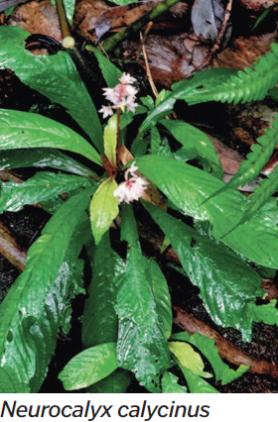
- Scientists at the Jawaharlal Nehru Tropical Botanic Garden and Research Institute (JNTBGRI) here have confirmed the multiple therapeutic properties of Neurocalyx calycinus used by the Cholanaickan tribe, one of the particularly vulnerable groups in Kerala, to treat inflammations and wounds.
- The scientists came to know of the miracle plant in 1988 during a biological survey deep inside the Nilambur forests. The medicinal plant is endemic to the southern parts of Western Ghats and Sri Lanka could offer scientists the key to new herbal formulations and modern drugs for the treatment of cancer, wound-healing, burn-healing, anti-cancer, analgesic, anti-inflammatory, immuno- enhancing, platelet-augmentation and anti-oxidant effects.
Healing wounds:
- The multiple therapeutic properties of Neurocalyx calycinus used by the Cholanaickan tribe, one of the particularly vulnerable groups in Kerala, to treat inflammations and wounds. A paste from the fresh leaves of N.calycinus, known in local parlance as ‘pacha chedi,’ to arrest the bleeding and heal the fresh wounds.
- Animal trials have proved that the leaves of N.calycinus possess wound-healing properties comparable to the standard drug Povidone/ Iodine in the early phase of inflammation. The anti-inflammatory activity of the leaves was found comparable to the drug diclofenac sodium.
- The pre-clinical trials confirmed the therapeutic effects of N.calycinus against burn wounds and pain, besides its immuno-enhancing, platelet augmentation, and anti-oxidant potential. The presence of high Vitamin E content and potent cytoprotective activity in cell lines in the plant species have also enhanced the prospects of developing an anti-cancer drug.
